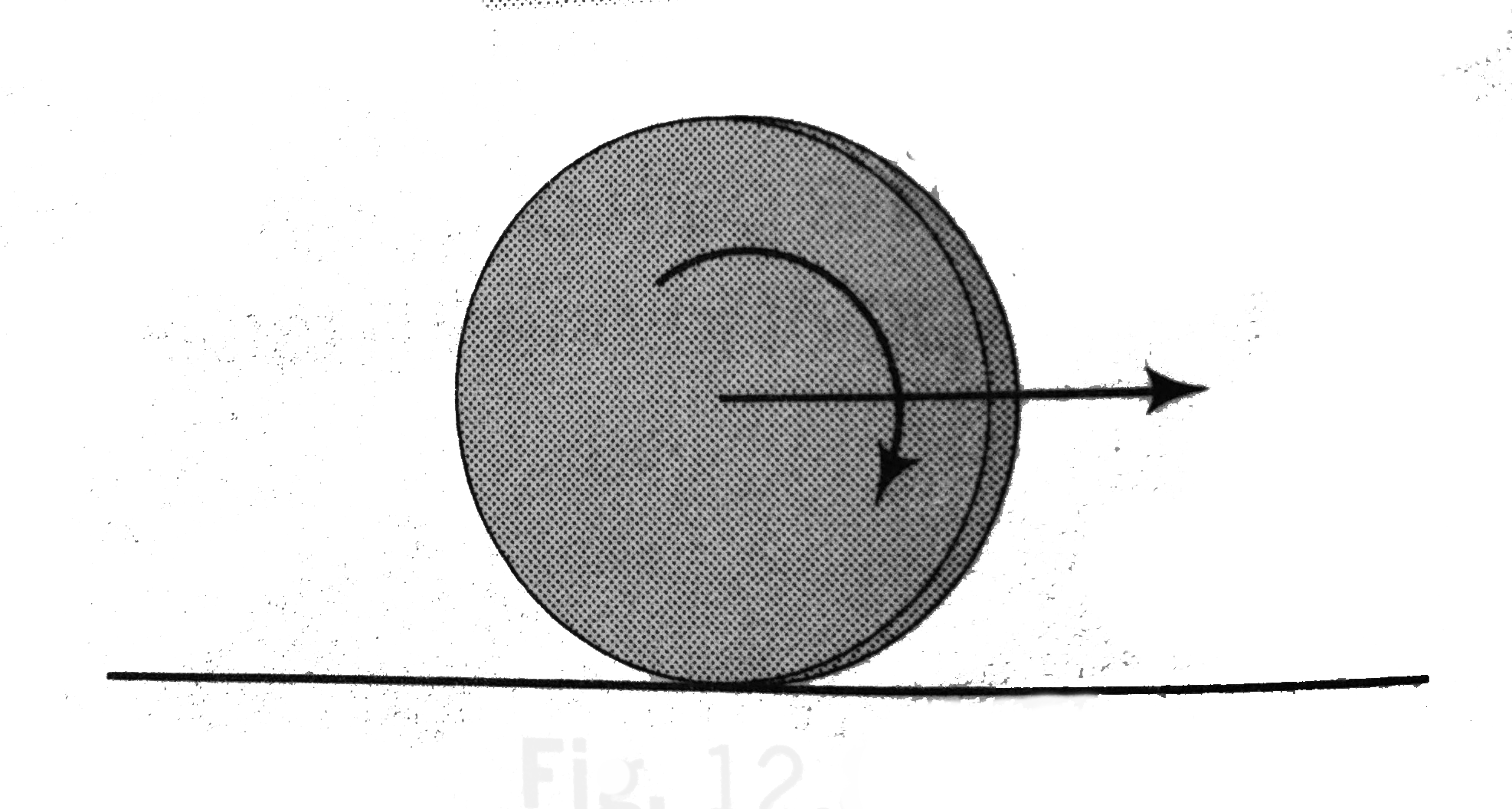A solid spherical ball is rolling without slipping down an inclined plane. The fraction of its total kinetic energy associated with rotation is
25
27
35
37
The correct Answer is:B
To find the fraction of the total kinetic energy associated with rotation for a solid spherical ball rolling without slipping down an inclined plane, we can follow these steps:
Step 1: Understand the Kinetic Energy Components
The total kinetic energy (K_total) of the rolling ball consists of two parts:
1. Translational Kinetic Energy (K_trans)
2. Rotational Kinetic Energy (K_rot)
The formulas for these energies are:
- Translational Kinetic Energy: Ktrans=12mv2
- Rotational Kinetic Energy: Krot=12Iω2
Step 2: Relate Linear and Angular Velocity
For a ball rolling without slipping, the relationship between linear velocity (v) and angular velocity (ω) is given by:
v=rω
where r is the radius of the ball.
Step 3: Moment of Inertia for a Solid Sphere
The moment of inertia (I) for a solid sphere about its center is:
I=25mr2
Step 4: Substitute for K_rot
We can express the rotational kinetic energy in terms of v:
Krot=12Iω2=12(25mr2)ω2
Substituting ω=vr:
Krot=12(25mr2)(vr)2
Krot=12(25mr2)v2r2=15mv2
Step 5: Substitute for K_total
Now, we can express the total kinetic energy:
Ktotal=Ktrans+Krot=12mv2+15mv2
Finding a common denominator:
Ktotal=510mv2+210mv2=710mv2
Step 6: Calculate the Fraction of K_rot to K_total
Now we can find the fraction of the total kinetic energy that is associated with rotation:
Fraction=KrotKtotal=15mv2710mv2
The mv2 terms cancel out:
Fraction=1/57/10=15⋅107=27
Final Answer
Thus, the fraction of the total kinetic energy associated with rotation is:
27
---
The total kinetic energy (K_total) of the rolling ball consists of two parts:
1. Translational Kinetic Energy (K_trans)
2. Rotational Kinetic Energy (K_rot)
- Translational Kinetic Energy: Ktrans=12mv2
- Rotational Kinetic Energy: Krot=12Iω2
For a ball rolling without slipping, the relationship between linear velocity (v) and angular velocity (ω) is given by:
v=rω
where r is the radius of the ball.
The moment of inertia (I) for a solid sphere about its center is:
I=25mr2
We can express the rotational kinetic energy in terms of v:
Krot=12Iω2=12(25mr2)ω2
Substituting ω=vr:
Krot=12(25mr2)(vr)2
Krot=12(25mr2)v2r2=15mv2
Now, we can express the total kinetic energy:
Ktotal=Ktrans+Krot=12mv2+15mv2
Finding a common denominator:
Ktotal=510mv2+210mv2=710mv2
Now we can find the fraction of the total kinetic energy that is associated with rotation:
Fraction=KrotKtotal=15mv2710mv2
The mv2 terms cancel out:
Fraction=1/57/10=15⋅107=27
Thus, the fraction of the total kinetic energy associated with rotation is:
27
Similar Questions
A solid sphere is rolling without slipping on a horizontal plane. The ratio of its rotational kinetic energy and translational kinetic energy is
View SolutionA coin rolls on a horizontal plane. What fraction of its total kinetic energy is rotational ?
View SolutionIf a spherical ball rolls on a table without slipping, the fraction of its total energy associated with rotation is -
(a) 25 (b) 27 (c) 35 (d) 37
View SolutionA circular disc rolls down an inclined plane . The ratio of rotational kinetic energy to total kinetic energy is
View SolutionA solid sphere is rolling is rolling without slipping on a horizontal ground. Its rotational kinetic energy is 10 J. Find its translational ad total kinetic energy.
View SolutionA hollow sphere is rolling without slipping on a rough surface. The ratio of translational kinetic energy to rotational kinetic energy is
View SolutionA ring is rolling on an inclined plane. The ratio of the linear and rotational kinetic energies will be
View SolutionWhen a solid cylinder rolls without slipping the ratio of kinetic energy of translation to its total kinetic energy is
View Solution
A solid disc is rolling without slipping on a horizontal ground as shown in figure. Its total kinetic energy is 100 J. what is its translational and rotational kinetic energy?
View SolutionWhen a sphere rolls without slipping the ratio of its kinetic energy of translation to its total kinetic energy is.
View Solution
